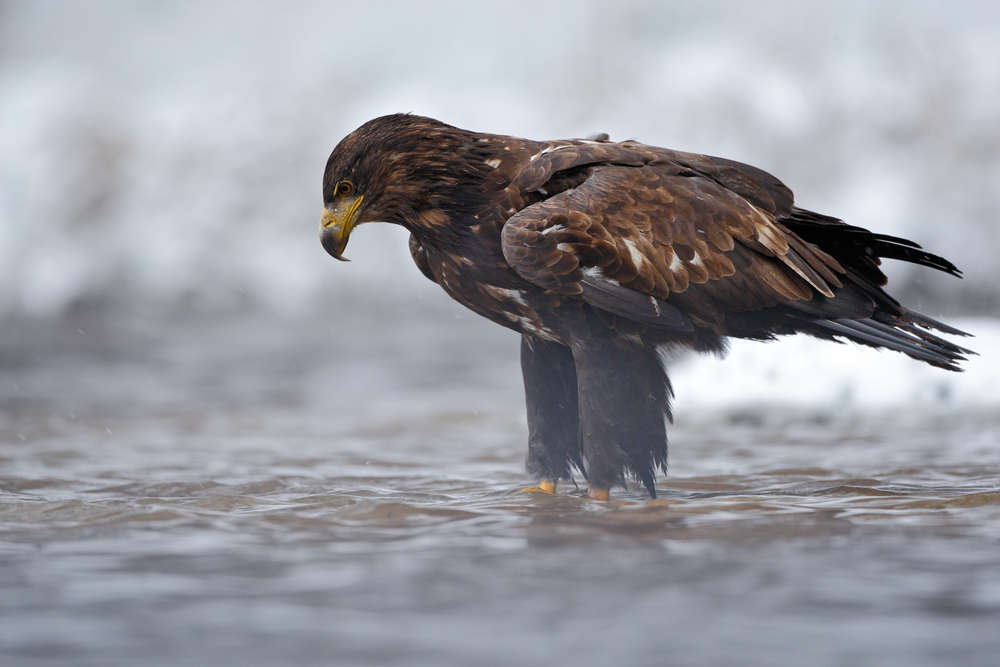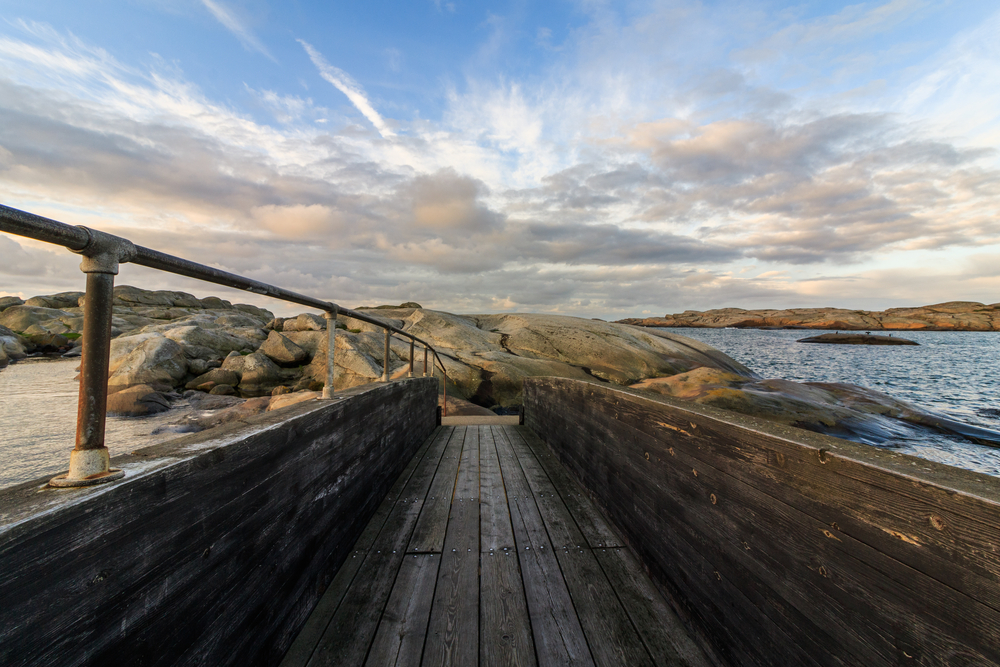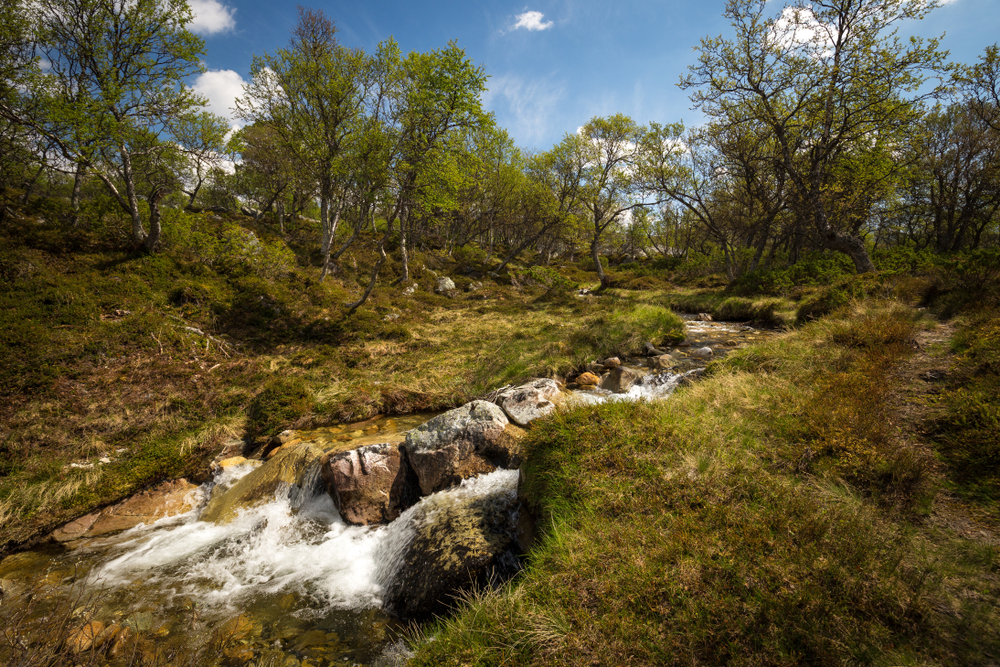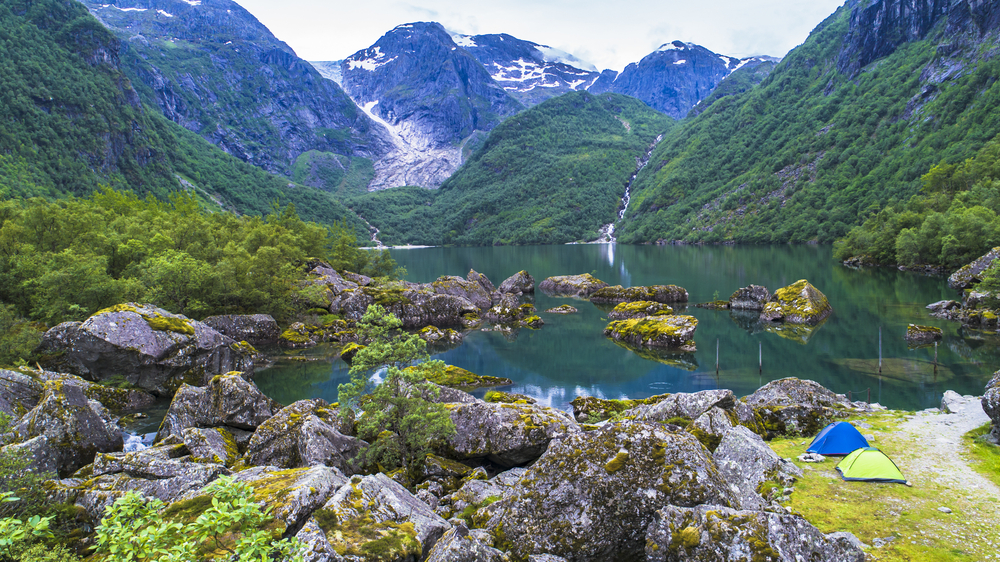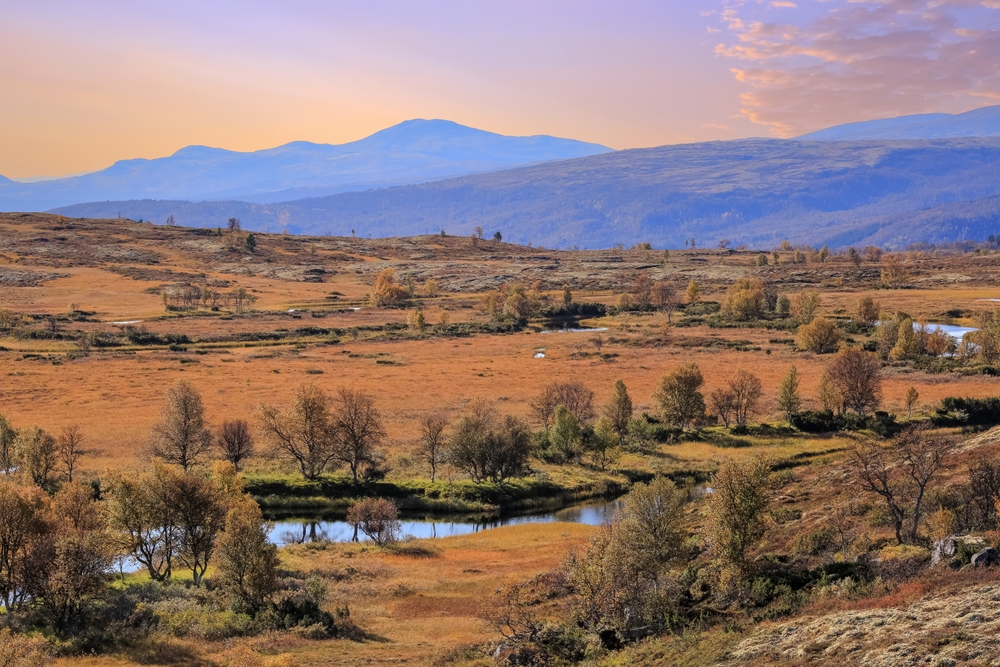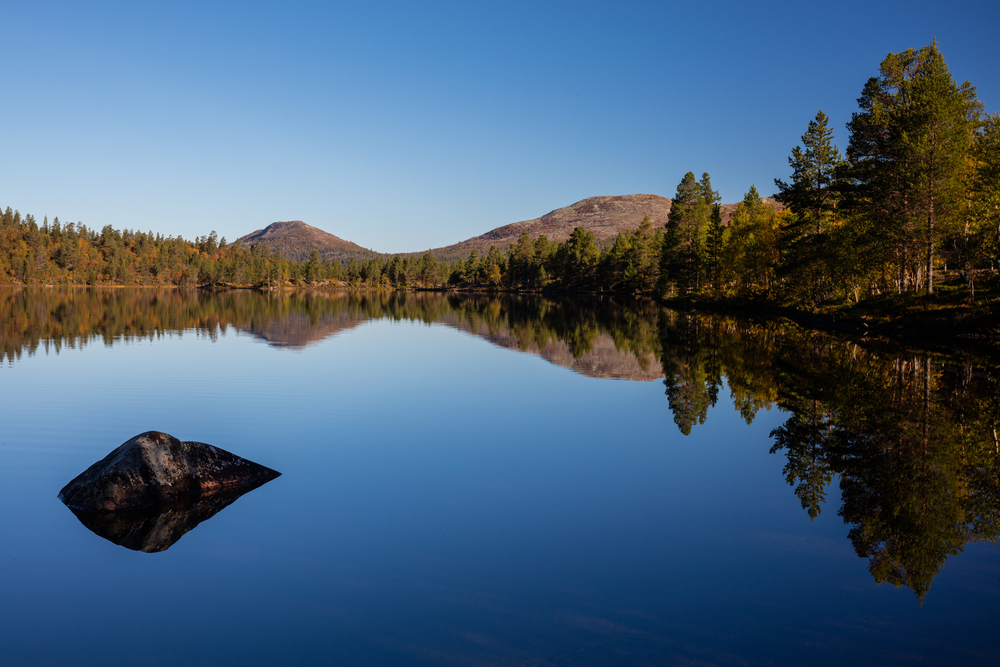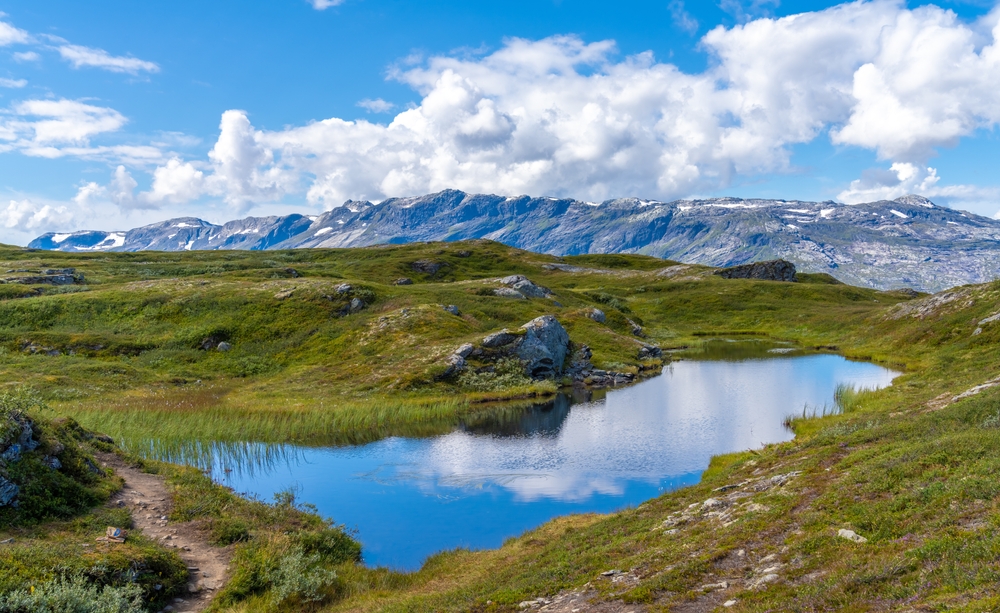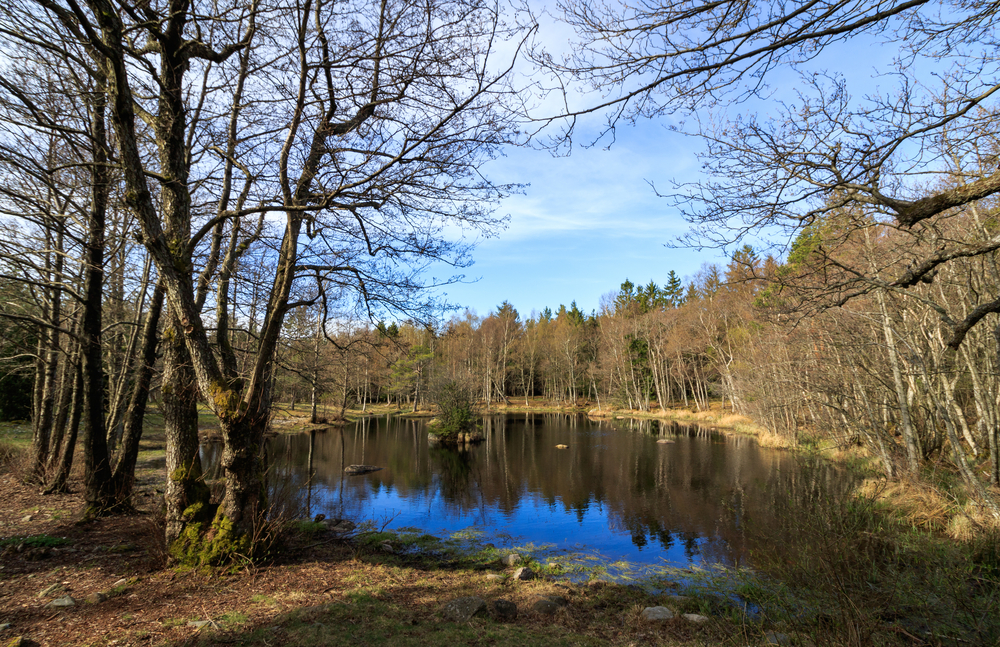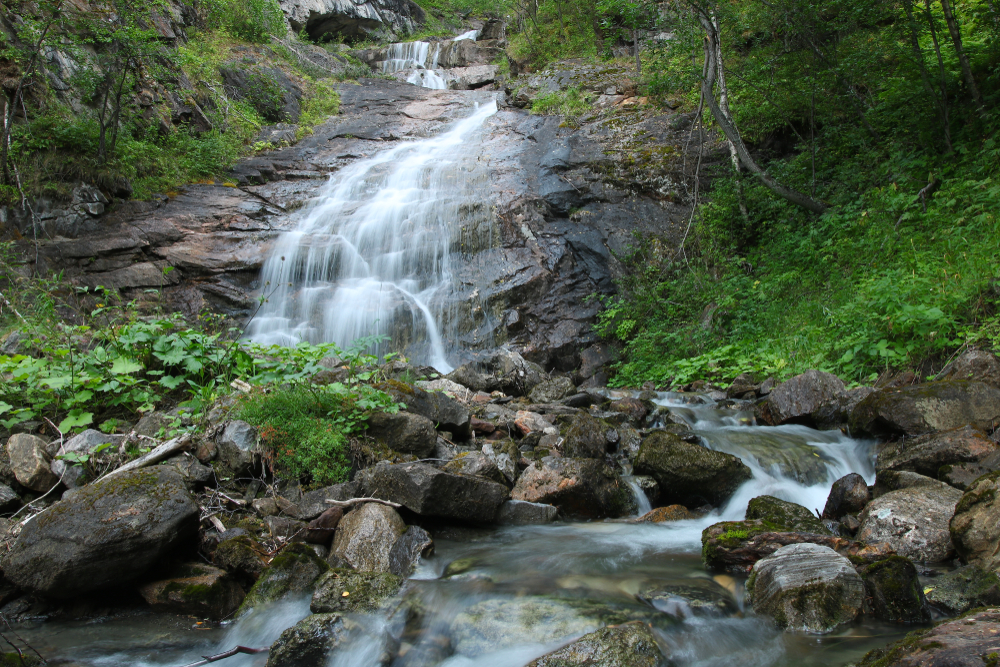Láhko Overview
Láhko National Park, known in the local Sami language as “Láhko,” meaning “high-lying, vast expanse,” is a remarkable protected area in Nordland county, Norway.
Established in 2012, the park encompasses approximately 188 square kilometers (72.6 square miles) and spans the municipalities of Gildeskål, Meløy, and Beiarn. Positioned between the towns of Bodø and Mo i Rana, it offers a pristine natural environment that showcases some of Norway’s most unique geological and ecological features.
The terrain of Láhko National Park is distinguished by its extensive alpine karst landscape, the largest of its kind in Norway. Karst landscapes are formed through the dissolution of soluble rocks such as limestone, resulting in distinctive features like caves, sinkholes, and underground rivers.
Within Láhko, visitors can explore a myriad of such formations, including natural bridges, deep crevices, and blind valleys. Notable geological attractions include Corbels Canyon and Corbels Bridge, where water has sculpted intricate patterns into the marble bedrock over millennia. The park’s topography is further characterized by rolling hills, clear lakes, and sparse vegetation, creating a serene and otherworldly atmosphere.
The flora within the park is notably diverse, with over 260 recorded plant species. Recent discoveries have highlighted the presence of rare mountain plants such as the Greenland star, snow wall, and tinderrub flower. This rich botanical diversity is supported by the calcareous marble bedrock, which provides a unique substrate for plant growth. The varied habitats within the park, from wetlands to dry ridges, support this wide range of plant life.
Láhko National Park is also home to a variety of wildlife. Bird enthusiasts may observe species such as the golden eagle and various ptarmigans. The park’s lakes and rivers are inhabited by fish species like trout and char, making it a popular destination for anglers. The diverse ecosystems within the park provide habitats for a range of insects, amphibians, and small mammals, contributing to its rich biodiversity.
Among the park’s popular features is the Fykantrappa stairway, a historic wooden staircase that offers both a cultural experience and a physical challenge. Climbing the 1,100 steps rewards visitors with panoramic views of the surrounding landscape. At the summit, Rallarbrakka, a mountain restaurant, operates during the summer months, providing a place to rest and enjoy local cuisine.
Additionally, the park’s numerous lakes, such as Fellvatnet and Langvatnet, are noted for their excellent fishing opportunities. Several rental cabins are available in the northern part of the park, offering accommodations for those wishing to extend their stay and immerse themselves in the natural surroundings.
Visitors can engage with Láhko National Park through various activities. Hiking is particularly popular, with marked trails leading to geological formations like Corbels Canyon and Jordbrua. The park’s unique karst landscape provides ample opportunities for exploration and photography.
Fishing enthusiasts can purchase licenses to fish in the park’s well-stocked lakes. For those interested in cultural history, the Fykantrappa stairway and Rallarbrakka offer insights into the area’s industrial past.
In terms of conservation, Láhko National Park faces challenges typical of protected areas, such as balancing visitor access with the preservation of delicate ecosystems. The park’s management focuses on maintaining the integrity of its unique geological features and biodiversity.
Efforts include monitoring plant and animal populations, managing trails to minimize erosion, and educating visitors on responsible recreation practices. The establishment of the park has been a significant success in preserving Norway’s largest contiguous area of alpine karst, ensuring that its unique landscapes and ecosystems are protected for future generations.
Láhko National Park offers a unique blend of geological wonders, diverse flora and fauna, and cultural history, making it a captivating destination for nature enthusiasts and adventure seekers alike.








































































